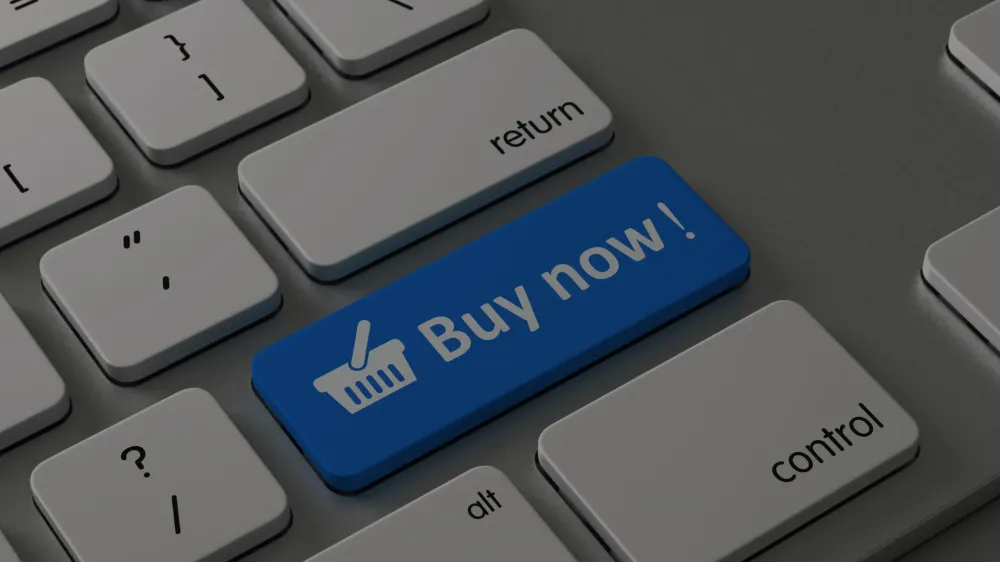In recent years, the "Buy Now, Pay Later" trend has taken the retail world by storm, offering consumers a convenient and flexible way to make purchases without immediate payment. But as the initial excitement subsides, many are left wondering if the boom is over or if this payment method is just getting started.
With more and more retailers jumping on the bandwagon and consumers embracing the ease and convenience of delayed payments, it's clear that BNPL is here to stay. This innovative payment option has revolutionised how we shop and opened up new opportunities for businesses to attract customers and increase sales. However, as with any trend, concerns and potential pitfalls always exist. In this article, we will delve deeper into the BNPL phenomenon, exploring its growth, impact, and whether it is a fad or a long-term game-changer in the world of retail.
What is "Buy Now, Pay Later"?
Buy Now, Pay Later, often abbreviated as BNPL, is a payment method that allows consumers to make purchases and delay payment until a later date. Instead of paying the full amount upfront, customers can split the cost into smaller, more manageable instalments. This concept has been around for decades, but it has gained significant popularity recently due to the rise of digital platforms and the increasing demand for flexible payment options.
The Rise of BNPL Services
The emergence of BNPL services can be traced back to the mid-2010s when companies like Klarna, Afterpay, and Affirm started gaining traction. These platforms offer consumers a seamless checkout experience by integrating with online retailers and providing instant credit decisions. This ease of use, combined with the allure of deferred payments, quickly caught the attention of shoppers worldwide.
As more retailers recognised the potential of BNPL, partnerships and integrations with these payment providers became commonplace. This allowed customers to access BNPL options at their favourite online stores, further fueling the trend's growth. In addition to online retailers, brick-and-mortar stores also started adopting BNPL services to cater to modern consumers' preferences.
Benefits of BNPL
One of the main reasons why BNPL has gained such popularity is its convenience. Traditional credit cards often come with high-interest rates and fees, making them less attractive for certain purchases. With BNPL, customers can avoid these extra costs and enjoy interest-free instalments, making it an appealing alternative for budget-conscious shoppers.
Another advantage of BNPL is the ability to spread payments over time. This flexibility allows consumers to make larger purchases without straining their finances. Instead of saving up for months to buy a new television or furniture, individuals can enjoy the product immediately and pay it off gradually. This flexibility is particularly beneficial during seasonal shopping periods or when unexpected expenses arise.
Furthermore, BNPL services often have a streamlined application process with instant approval decisions. This quick and hassle-free experience appeals to customers who value convenience and prefer to avoid lengthy credit checks. With just a few clicks, shoppers can complete their purchase and get approved for deferred payments, eliminating the need for complicated paperwork or waiting periods.
Concerns and Criticisms of BNPL
While BNPL offers numerous benefits, it is not without its concerns and criticisms. One of the main issues raised is the potential for customers to accumulate debt. The ease of making purchases without immediate payment can lead to impulsive buying decisions, especially when users have access to multiple BNPL services. With proper financial discipline, individuals may be able to handle mounting bills and struggling to repay their debts.
Another criticism is the lack of transparency regarding fees and interest rates. While BNPL services promote interest-free instalments, they often charge late fees or penalties for missed payments. Consumers who need to read the terms and conditions carefully may face unexpected costs, diminishing the initial appeal of the payment method. Some argue that BNPL services may target vulnerable customers more likely to overspend and accumulate debt.
BNPL Statistics
The growth of BNPL has been nothing short of impressive. According to a report by Allied Market Research, the global BNPL market was valued at $7.3 billion in 2019 and is projected to reach $33.6 billion by 2027, growing at a CAGR of 21.2% from 2020 to 2027. These numbers highlight the increasing demand for flexible payment options and the willingness of consumers to embrace alternative financing methods.
The popularity of BNPL is particularly evident among younger generations. A survey conducted by PYMNTS.com in collaboration with PayPal found that 60% of Gen Z consumers have used a BNPL service, while 42% of millennials have done the same. These statistics demonstrate the significant impact of BNPL on the shopping habits of younger demographics and indicate that the trend is not slowing down anytime soon.
The Future of BNPL
Given the rapid growth and widespread adoption of BNPL, this payment method is not just a fad. Its convenience aligns with modern consumers' changing expectations and preferences. However, the future of BNPL will likely involve more regulation and increased scrutiny to address concerns surrounding consumer protection and responsible lending practices.
As the market matures, consumers expect more standardised terms and conditions, clearer fee structures, and enhanced transparency from BNPL providers. The industry will likely focus on educating users about responsible spending and debt management to prevent individuals from falling into financial hardships. Additionally, collaborations between BNPL platforms and credit bureaus may become more prevalent to ensure proper risk assessment and responsible lending.
How Businesses Can Leverage BNPL
For businesses, embracing BNPL can be a strategic move to attract and retain customers. By offering this payment method, retailers can tap into a larger customer base and cater to the preferences of shoppers who value flexibility and convenience. Additionally, BNPL services can help increase average order values as customers are more likely to make bigger purchases when they can pay in instalments.
Moreover, BNPL can contribute to reducing cart abandonment rates. Many consumers abandon shopping carts due to unexpected costs or high upfront payments. By integrating BNPL options into the checkout process, businesses can eliminate this barrier and encourage customers to complete their purchases. This streamlined experience can significantly impact conversion rates and overall sales.
Tips for Consumers Using BNPL
While BNPL can be useful for managing expenses, consumers need to exercise caution and responsible spending habits. Here are a few tips to make the most of BNPL services:
- Budget Wisely: Before making a purchase using BNPL, ensure that you clearly understand your budget and the impact the payments will have on your finances. Avoid overextending yourself and only use BNPL for purchases you can comfortably afford.
- Read the Terms and Conditions: Familiarise yourself with the terms and conditions of the BNPL service you are using. Pay attention to late fees, interest rates, and repayment schedules to avoid any surprises down the line.
- Keep Track of Your Payments: Note when your instalments are due and ensure you have sufficient funds to cover the payments. Missing payments can result in additional fees and negatively impact your credit score.
- Limit the Number of BNPL Services: While it may be tempting to use multiple BNPL services, it is best to limit yourself to one or two platforms to avoid overspending and accumulating excessive debt.
Alternatives to BNPL
While BNPL has gained popularity, other payment options are available to consumers. Traditional credit and debit cards are still widely used and offer advantages. Credit cards, for example, provide consumers with access to a revolving line of credit, allowing them to make purchases and repay the balance over time. Debit cards, conversely, deduct funds directly from the user's bank account, ensuring that purchases are made within one's means.

Additionally, lay-by or layaway programs, where customers pay for purchases in instalments and receive the item only after the full payment is made, can be an alternative to BNPL.
Layaway programs eliminate the need for credit checks or approvals and often come with no interest or fees. However, they may not provide the immediate gratification that BNPL offers.
Conclusion
The BNPL trend has revolutionised the retail industry, offering consumers a convenient and flexible way to purchase without immediate payment. With its continued growth and increasing adoption, it is clear that BNPL is not just a fad but a long-term game-changer. However, considering their budget and financial limitations, consumers must approach BNPL services responsibly. Likewise, businesses can leverage BNPL to attract and retain customers, but they must also ensure responsible lending practices and transparency. As the industry continues to evolve, regulations and standardisation will likely play a more significant role in shaping the future of BNPL.





